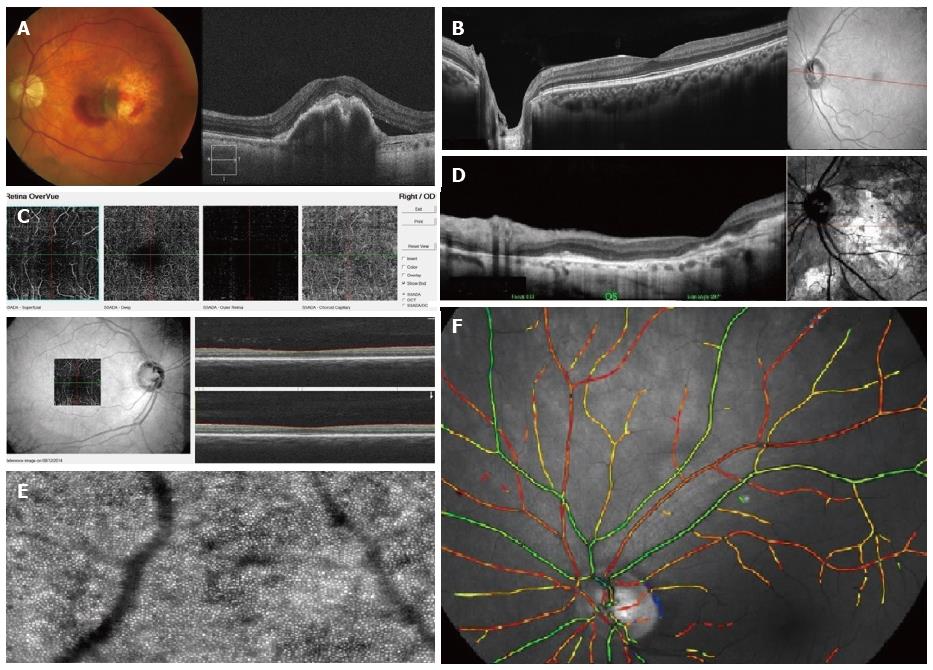Copyright
©The Author(s) 2016.
World J Ophthalmol. May 12, 2016; 6(2): 10-19
Published online May 12, 2016. doi: 10.5318/wjo.v6.i2.10
Published online May 12, 2016. doi: 10.5318/wjo.v6.i2.10
Figure 3 Retinal pictures and optical coherent tomography of various types of optical coherent tomographs showing the width and depth of image captured by each machine.
Note difference in level of detail and depth and also the accompanying retinal pictures. A: RPE rip. Colour fundus photo (left), spectral domain OCT (right). Both images taken by Zeiss Cirrus 800. This machine can obtain colour fundus photos and spectral domain OCT; B: Enhanced depth OCT showing author’s left eye (standard display includes optic disc and macula). Heidelberg OCT. Note better visualization of retinal layers; C: Non-invasive vascular imaging acquired by OptoVue OCT is spectral domain but images of the vascular tree at macula and within choroid can be seen. “Angio-OCT”; D: cSLO OCT. Good visualization of retinal layers in a patient with advanced and variable scarring; E: Adaptive optics imaging showing individual photoreceptors and microvasculature of the retina. Courtesy of imagine eyes; F: Oxymetric imaging. Courtesy of Oxymap. OCT: Optical coherent tomography; cSLO: Confocal scanning laser ophthalmoscope; RPE: Retinal pigment epithelium.
- Citation: Saeed MU, Oleszczuk JD. Advances in retinal imaging modalities: Challenges and opportunities. World J Ophthalmol 2016; 6(2): 10-19
- URL: https://www.wjgnet.com/2218-6239/full/v6/i2/10.htm
- DOI: https://dx.doi.org/10.5318/wjo.v6.i2.10









